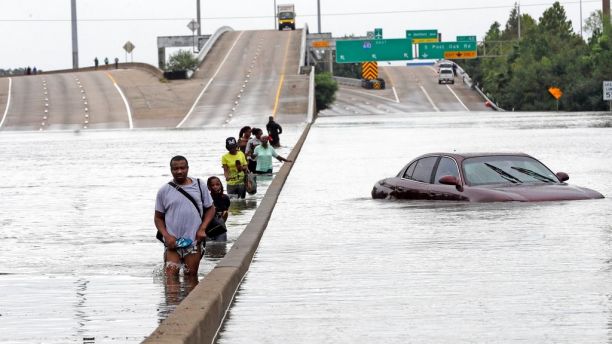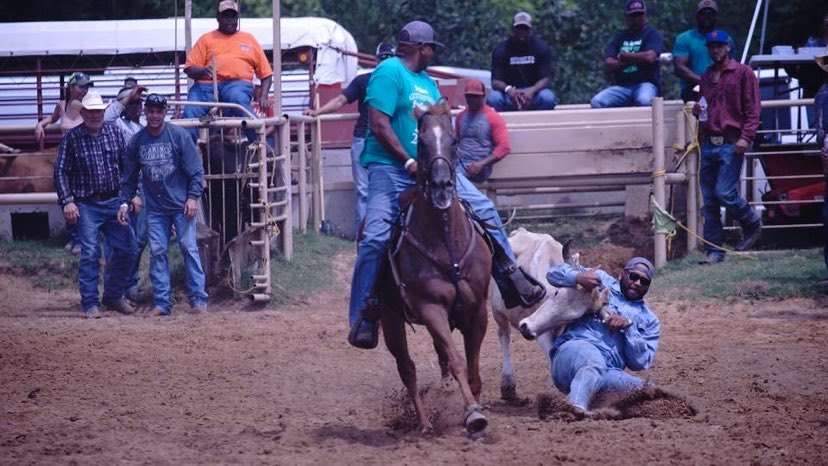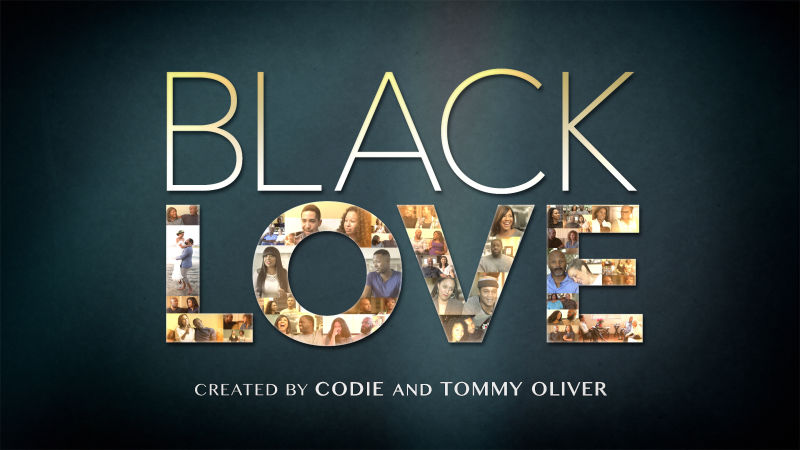
By Ben Guarino
This article has been updated.
The flooding from Hurricane Harvey, which has wreaked havoc in Texas, is both catastrophic and historic. The reported death toll rose to at least 16 Tuesday, and officials were projecting that as many as 30,000 people will ultimately be evacuated from flooded homes in Houston and other cities and towns in the state.
Though the storm will pass and waters eventually recede, the danger from floodwaters will linger. “I distill it down to short term, long term and big picture,” said Peter Hotez, dean of the National School of Tropical Medicine at Houston’s Baylor College of Medicine.
Short term: Floodwater injuries
The majority of people who die during floods drown: About 75 percent of the fatalities are drownings, per the World Health Organization. Two feet of rapid floodwater will sweep away an SUV. Just six inches of water, if it moves quickly enough, can knock over an adult, according to the National Weather Service.
“People don’t understand that rushing water is very dangerous,” Julia Becker, a social scientist who studies natural disasters, told Hakai Magazine in 2015. “They might know floods are kind of risky, but they don’t understand what the real consequences are.”
In 2015, Becker and her colleagues published a literature review of behavior during floods. They concluded that people repeatedly underestimated floods. “Flood tourists” traveled to submerged areas to sightsee. Others voluntarily entered the floodwaters to play. Between 1997 and 2008, 1 in every 4 flood deaths in Australia involved swimming, surfing, “acting on a wager” or some other form of recreation or risky behavior.
Even water that appears calm may be unsafe. The Centers for Disease Control and Prevention warns against wading in floodwater, due to the sharp metal bitsor glass shards that may lurk below.
Floodwaters can also draw out unwelcome wild animals. Images of stinging fire ants clumped together as large floating rafts set social media abuzz on Monday. Snakes, too, are a concern. “Storm activity definitely increases the potential for snakebite as the snakes get flooded out and seek higher ground,” said Bryan G. Fry, a venomous-snake expert at the University of Queensland in Australia. (But there are no sharks in Houston. One widely shared image, of a great white swimming in a flooded road, is a doctored picture.)
Short term: Infectious disease
A flood contains more than rain. Sewage systems spill their guts. And the water can dredge up things more disturbing, if less infectious, than human waste. In New Orleans in 2005, the flooding from Hurricane Katrina exhumed corpses, sending coffins afloat through neighborhoods.
It is not easy to predict the nasty microbes that will strike. “We don’t have enough epidemiological studies,” Hotez said. But Hurricane Katrina, which hit land at the same time of the year as Harvey, could offer some lessons. Health officials are urging people to get tetanus booster shots to protect themselves against the disease, which enters the body through cuts. Skin infections could be caused by exposure to MRSA, an antibiotic-resistant staphylococcus bacterium, as well as pathogens popularly described as “flesh-eating.” (What about more exotic germs, such as the one that causes cholera? “Certainly the conditions here could promote cholera,” Hotez said, “but you’d have to have somebody infected with cholera coming into the area.”)
Stress jeopardizes immune systems, and it is difficult to maintain food hygiene in disaster zones. Katrina unleashed gut diseases triggered by E. coli and a lack of safe food and potable water. Add crowded conditions — officials are preparing a “mega-shelter” in the Dallas Convention Center to house 5,000 people — and evacuees are at higher risk of getting sick, Hotez said. During Katrina, there were respiratory infections among people in shelters, including an apparent uptick in tuberculosis.
Short term: Power outages
Severe weather frequently knocks over electrical lines — give fallen power lines a wide berth, the CDC advises, and report them to electric companies. Homeowners who rely on portable generators for temporary power should be aware of the danger of inhaling carbon monoxide. A 2012 review identified 75 deaths from carbon monoxide poisoning during natural disasters between 1991 and 2009; backup generators were responsible for 83 percent of deaths. To avoid breathing the gas, operate the generators outdoors and 20 feet from doors or windows.
A lack of power means a lack of air conditioning or other ways to keep cool, further stressing people and putting those with health issues at greater risk given the season. Behavioral scientist Mary Hayden, of the National Center for Atmospheric Research, notes in a forthcoming paper about Houston’s capacity to withstand extreme heat that power outages often follow hurricanes. About 3 million people in eight states were left without power after Hurricane Ike in 2008, and restoring the power grid took 16 days. Houston’s average high in September is the low 90s for much of the month.
Short term: Drug access
Those forced to flee flood zones can struggle to acquire medication. This is a risky scenario for people with chronic conditions. Insulin was particularly in demand in Houston, said Thomas Tighe, president and chief executive of the medical nonprofit Direct Relief. Diabetics “who don’t have insulin are going to go into crisis pretty rapidly.” During Hurricane Katrina, Tighe said, many evacuees came to hospitals not to treat mass trauma but to manage diabetes, hypertension and asthma.
In the 12 years since that storm, Direct Relief stockpiled medication in the Texas coast and other areas prone to hurricanes. Texas was a pressing concern, Tighe said, because it also has the lowest rates of health insurance in the country. The drug caches are kept in waterproof containers, though some, like inhalers and insulin, must be kept cold and transported to relief areas. The nonprofit was able to deliver medicine to Houston shelters while commercial supply lines were being developed.
Meanwhile, several consumer pharmacies remained open despite the storm. “Currently we have about 300 stores in the region that are operational,” said Phil Caruso, a spokesman for pharmacy chain Walgreens. Delivery trucks traveled slowly to the stores, restricted by traffic and road closures. Several of the pharmacies ran on generator power; Walgreens had dispatched a tanker to resupply pharmacies with fuel.
Demand for supplies had heightened, but Caruso said he was not aware of drug shortages. About 170 Walgreens stores, many in the city of Houston, remained closed. CVS Pharmacy also closed 180 stores of the nearly 770 in the area, a representative for the company said, but had sent a mobile pharmacy unit en route.
Both companies were monitoring the region to open or close locations. “This is a very fluid situation,” Caruso said.
Short and long term: Mosquitoes
Based on experience following Hurricane Katrina, there will be several competing effects on the population of mosquitoes and the prevalence of arboviruses, such as Zika, dengue and West Nile, that they transmit.
Mosquitoes need stagnant water to lay eggs. Winds and floods will wash away containers that would have been breeding pools, said Hayden, who studies weather and vector-borne disease. In the immediate future, both Hayden and Hotez anticipate that local mosquito populations will decline.
But once the floodwaters recede, mosquitoes will recover. In 2006, a year after Katrina, Tulane University public-health experts reported that cases of West Nile infection increased more than twofold in communities that had been in that hurricane’s path. The study authors suggested that increased exposure was the culprit. Fleeing partially submerged buildings, people spent days outside waiting for rescue.
Without air conditioning or dry spaces, Texans may find themselves outdoors, too. “There’s going to be a need for insect repellent down there,” Hayden said.
Long term: Mental health
Hurricanes can damage mental health in long-term ways, Nature reported in 2015. A year after Hurricane Katrina, residents reported an increase in suicidal thoughts, increasing from 2 percent to 6 percent among the 815 people studied. Post-traumatic stress disorder and depression also worsened.
Long term: Mold
Mold is another hurricane holdover. Hayden, who assessed damage in Galveston after Hurricane Ike, said evacuees may not realize they could spend two or three weeks away from home. In a waterlogged, overheated home, mold can run rampant in that time.
The Washington Post reported that two months after Hurricane Katrina, CDC investigators found mold in the walls of half of 112 water-damaged homes. The worst symptoms from routine mold exposure — some amount of mold is in the air we breathe every day — are typically allergic reactions and are rarely fatal but can exacerbate other health problems. Post-Katrina mold, however, was implicated in the deaths of four Southern University at New Orleans professors — all of whom worked in the same storm-damaged building. All died within a few months of one another.
The economic impact of mold and water damage also can be severe. “That’s a whole consequence that people really don’t consider,” Hayden said. “It’s devastating on all levels.”
Big picture: Preparedness planning
What comes into focus from disasters such as Harvey is a lack of disaster preparedness compared with pandemics such as the flu, according to Hotez. “We don’t realize that the Gulf Coast is America’s vulnerable underbelly of infectious disease,” he said, referring to a paper he wrote in 2014. The hot and humid region combines high levels of poverty with major transportation hubs, with problems exacerbated by the effects of climate change.
“All of those forces,” he explained Monday, “combine to make the Gulf Coast especially susceptible to infectious and tropical disease.”










